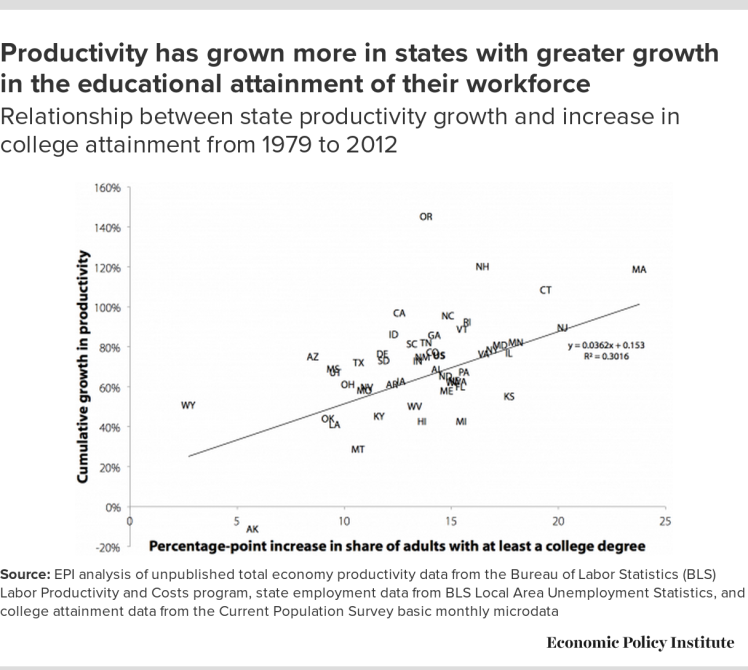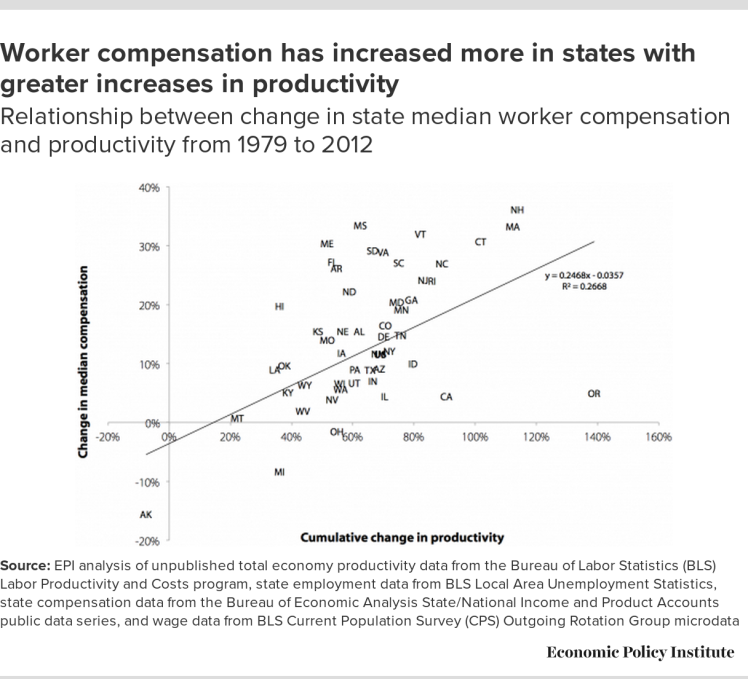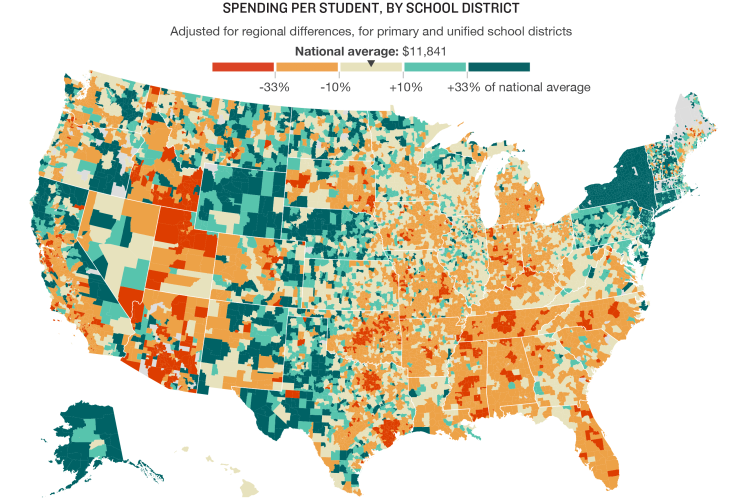The United States ranks third in the world in GDP behind China and the European Union1. Meanwhile, the U.S. ranks 14th in overall education2.
Education in the United States must be examined at every level if any improvement is going to be made, and there is good reason to want that to happen.
Highly educated citizens result in higher paid workers who are more productive than their uneducated counterparts3.

Higher wages result in more taxes, while increased productivity results in greater GDP.

Educating a society helps to unlock it’s productive potential by giving people the tools needed to act on an idea. As the economy in the United States becomes more dependent on technology a well educated workforce must be ready to step into new roles that require higher education. To create a highly educated workforce you have to start at the very bottom. You have to educate the children.
K-12
K-12 programs nationwide are underfunded largely because of the default approach to raising funds for schools – property taxes4. Schools within the same city, but separated by only a few city blocks are subject to wildly different funding levels due to high or low property values and the presence or absence of tax paying businesses. Two schools in Chicago provide a prime example5:
Chicago Ridge School District spent $9,794 per child in 2013.
National average is $11,841.
Roundout School spent $28,639 per child.

The heavy reliance on property tax to fund K-12 schools results in massive disparity between wealthy and poor school districts. If property tax is going to be the primary determinant of school funding then additional state and federal funds need to be provided to make up the difference for underfunded schools.
The efforts of our hardworking teachers must be supported. Teachers should not have to purchase classroom materials with their own earnings. Most importantly, the need for new teachers must be addressed13.
Higher Education – For-Profit
The concept of higher education in the United States is fraught with issues. Foremost, the rise in popularity and availability of for-profit colleges is worrisome. These schools attain accreditation from regional organizations that have limited oversight. The vast majority of the cookie cutter courses offered by these organizations are produced and administered through companies like Blackboard, which allows a part time professor to track student submissions with limited interaction.
Not surprisingly, the dropout rates of for-profit colleges are much higher than traditional colleges and universities.
Graduation rates:
For-Profit: 22%
Public Institutions: 55%
Private Nonprofits: 65%
The trouble doesn’t end there. 72% of the graduates from for-profit colleges earn less than high school drop-outs6.
With 86% of financial funding of for-profit students coming from federal loans, the business model of for-profit colleges is clear6: Get as many students in the door as possible to secure federally backed funding without regard to the graduation or future success of the students.
For-profit schools should be held to standards as high, or higher, than those of state funded schools. Accreditation must have additional oversight if it’s going to allow for-profit schools to qualify for federal funds. Schools with high dropout rates and low post graduate earning opportunities should be restricted from receiving federal funds.
Higher Education – Traditional
Traditional colleges and universities are not without their own problems. The focus of traditional schools has shifted away from the education of students to campus amenities, sports infrastructure, and revenue-generating research.
School administrations need to be focused on spending money that improves student learning. Publicly funded schools should not be attempting to keep pace with private institutions that provide amenities that do not enhance student learning. Amenities including, but not limited to: movie theaters, massage parlors, on-campus ski resorts, beach clubs, and luxury dorms that put vacation resorts to shame7,8.
While sports are important to the socialization and character-building process of our youth, some colleges have been accused of sacrificing academic integrity in order to build championship teams. The school may benefit financially and attract talent for future teams, but the students who are only expected to go through the motions of getting an education and ultimately fail to advance to a professional sports career suffer. Taylor Branch’s article, “The Shame of College Sports” published by The Atlantic, provides detailed examples of the profiteering behavior of schools and the NCAA9.
Finally, the phrase “publish or perish” exists for a reason. Faculty in higher academia at major universities are often encouraged to regularly publish work to ensure their credentials, and therefore the credentials of the school, are among the most recognized. The problem with this expectation is that it takes focus of the faculty away from their primary goal: educating students. Worse, a study has shown that the expectation to regularly publish articles stymies researchers from engaging problems and working on more groundbreaking research10.
State and federally funded schools should be expected to invest more heavily in projects that enhance student learning rather than on amenities that are meant to compete with private institutions. Faculty should be expected to focus on teaching students and engage in research that prioritizes beneficial learning opportunities for those students.
Textbooks
The textbook industry is relied upon heavily by educational institutions to provide quality materials to their students. Sadly, the publication and sale of textbooks has become a racket allowing publishers to make minor edits and charging increasingly high prices. Educational institutions are then forced to purchase the latest editions of textbooks, or institutions require their students to purchase the materials11.
College bookstores have taken advantage of this practice by selling textbooks at full price at the beginning of semesters and buying them back at pennies on the dollar. The books are then resold at unjustifiably high prices12.
The college textbook racket must be broken. Publishers cannot be allowed to charge exorbitant prices for textbooks without evidence of expenses that would justify them.
Conclusion
In order to continue economic growth in the United States we need to prepare our future workforce for the educational requirements of those future positions. Educating workers increases earning and productivity capabilities and improves the ability of the United States to compete on a global scale.
The most effective way to achieve educational success at this point is to reform education financing and refocusing expectations.
This article didn’t address more specific current education issues like common core, charter schools, religion in the classroom, transgender bathroom rules, etc. They were out of the scope of this article and will likely be addressed in the near future.
References
1 Central Intelligence Agency. The World Factbook.
2 Pearson. 2014. Index – Which countries have the best schools?
3 Berger, Fisher. 2013. A Well-Educated Workforce is Key to States Prosperity.
4 Hurt, Park. Education Week, U.S. Census Bureau. Spending Per Student, By School District.
5 Turner, Khrias, et al. 2016. Why America’s Schools Have a Money Problem.
6 Haskell. 2014. The Graduation Rate of For-Profit Colleges is Shocking….
7 Swartz. 2014. Is college tuition paying for essentials, or lavish amenities?
8 Hoeller. 2014. 10 College Amenities So Insane You’ll Want To Go Back To School.
9 Branch. 2011. The Shame of College Sports.
10 Hampton. 2015. Pressure to ‘publish or perish’ may discourage innovative reserach, UCLA study suggests.
11 Farrell. 2015. College textbooks are a racket.
12 Slemp. 2013. Why Students Are Leaving The College Bookstore (According to College CFOs).
13 Cross. 2016. Teacher Shortage Areas.